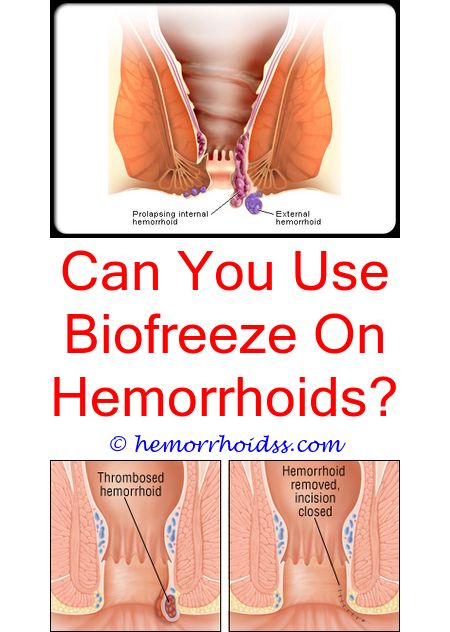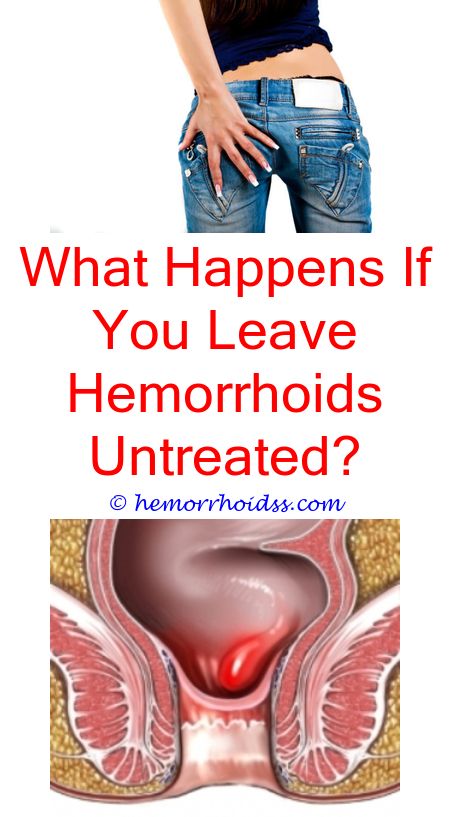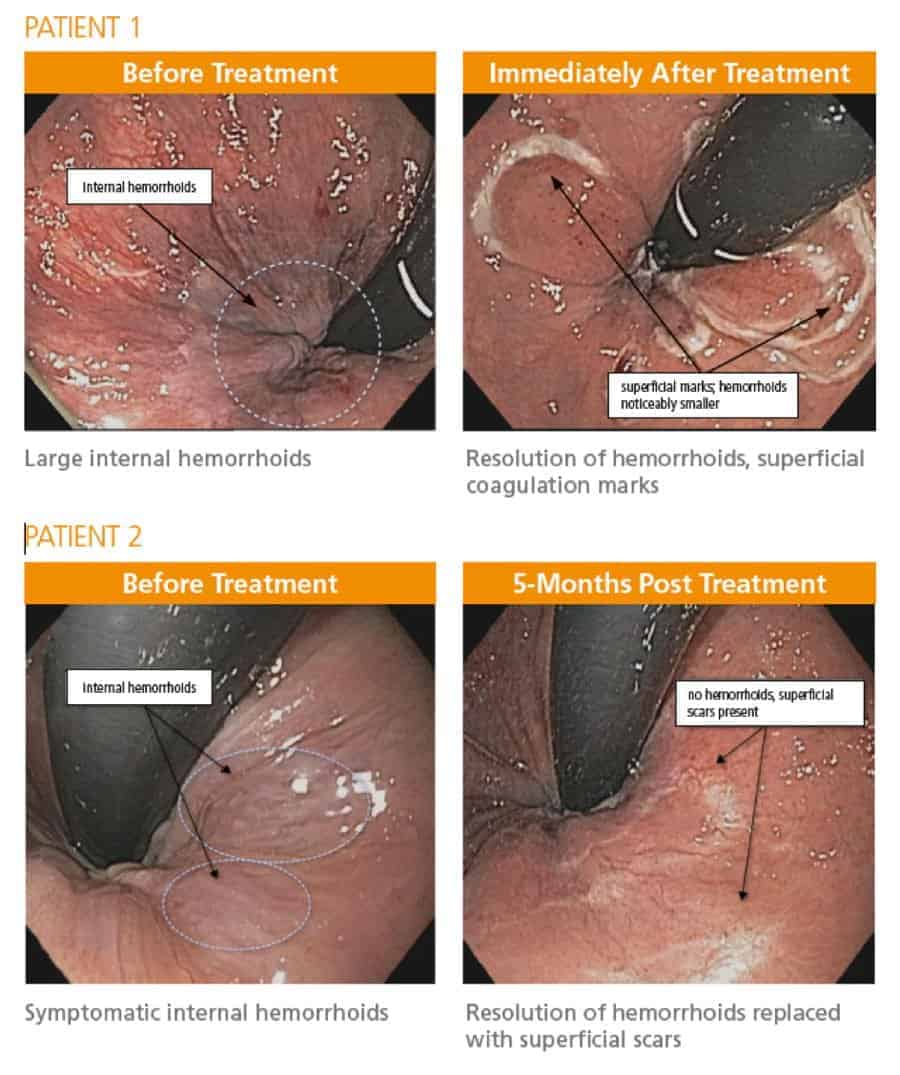When To Seek Medical Help
How Can I Treat Hemorrhoids At Home
You can most often treat your hemorrhoids at home by
- Eating foods that are high in fiber
- Taking a stool softener or a fiber supplement
- Drinking enough fluids every day
- Not straining during bowel movements
- Not sitting on the toilet for long periods of time
- Taking over-the-counter pain relievers
- Taking warm baths several times a day to help relieve pain. This could be a regular bath or a sitz bath. With a sitz bath, you use a special plastic tub that allows you to sit in a few inches of warm water.
- Using over-the-counter hemorrhoid creams, ointments, or suppositories to relieve mild pain, swelling, and itching of external hemorrhoids
What To Wear How To Sleep And Other Practical Tips For Hemorrhoid Sufferers
From chronic itching to excruciating pain, your hemorrhoids may cause a lot of discomfort that can affect your day-to-day activities, as well as your sleep.
At Midwest Hemorrhoid Treatment Center in Creve Coeur, Missouri, our experienced physician, Dr. Betsy Clemens, has more than two decades of experience helping those suffering with hemorrhoids get relief. We want to share with you some of our best at-home treatments to help you manage your hemorrhoid symptoms.
Read Also: What Can I Do To Shrink Hemorrhoids
Common Symptoms Of Hemorrhoids
When hemorrhoids start to become severe, they result in painful bowel movements and strain in the specific area. Some of the symptoms that hemorrhoids present are:
- Irritation
- Discomfort
- Lumps
These are just a few of the symptoms you might experience if you are suffering from hemorrhoids. Specialists point out that there are no proven causes of hemorrhoids, but there are a few factors that could lead to their formation.
Home Remedies For Hemorrhoids

We include products we think are useful for our readers. If you buy through links on this page, we may earn a small commission. Heres our process.
We include products we think are useful for our readers. If you buy through links on this page, we may earn a small commission. Heres our process.
Recommended Reading: What Is The Best Way To Shrink Hemorrhoids
What Can You Do For Relief
If you have hemorrhoids, lifestyle changes may help them heal faster. One cause of hemorrhoids is straining during bowel movements. Adding more high-fiber foods to your diet, such as vegetables, fruits, and whole grains, can help soften your stool and make it easier to pass.
You should also drink plenty of water to help relieve constipation and reduce straining during bowel movements.
Here are some additional things that may help relieve symptoms:
- Minimize the time you sit on the toilet.
- When you feel the urge to move your bowels, go as soon as possible.
- Put your feet on a small stool during bowel movements to change the position of your rectum.
- If youre pregnant, sleep on your side. This will help relieve some of the pressure around your anus.
- Ask your doctor about taking a stool softener or a fiber supplement, such as psyllium or methylcellulose . A tablespoon of mineral oil added to food can also help soften stools.
- Keep the anal area clean. Take regular showers, and use moist wipes to clean the area around your anus after you pass a bowel movement.
- Use a sitz bath or sit in a warm tub for a few minutes to bathe the anal area.
You may also try using over-the-counter topical medications to ease discomfort, such as phenylephrine hemorrhoidal gel . These products are used if the hemorrhoids are bulging and inflamed.
Best Treatments For Internal Hemorrhoids
There are various modes of management for internal hemorrhoids starting from home remedies to surgical methods
- home remedies which include lifestyle modifications such as a high fiber diet, drinking more water, warm sitz bath
- nonsurgical management such as over the counter creams, analgesics, laxatives, and stool softeners
These may relieve the pressure inside the anal canal and make you feel better, and get rid of it
- Minimally invasive procedures such as
- Lords dilatation
- Injection sclerosant therapy
- Barron’s banding
- Cryotherapy
Newer methods such as harmonic scalpel therapy
- HAL – RAR Doppler-guided haemorrhoidal artery ligation & rectoanal repair proctoplasty
Read Also: Can You Get Laser Hair Removal With Hemorrhoids
Medical Procedures For Hemorrhoids
If your symptoms are severe or aren’t getting better after a couple of weeks, your doctor may suggest a procedure to shrink or remove the hemorrhoids. Many can be performed in their office.
Injection. Your doctor can inject an internal hemorrhoid with a solution to create a scar and close off the hemorrhoid. The shot hurts only a little.
Rubber band ligation. This procedure is often done on prolapsed hemorrhoids, internal hemorrhoids that can be seen or felt outside. Using a special tool, the doctor puts a tiny rubber band around the hemorrhoid, which shuts off its blood supply almost instantly. Within a week, the hemorrhoid will dry up, shrink, and fall off.
Coagulation or cauterization. With an electric probe, a laser beam, or an infrared light, your doctor will make a tiny burn to remove tissue and painlessly seal the end of the hemorrhoid, causing it to close off and shrink. This works best for prolapsed hemorrhoids.
Surgery. For large internal hemorrhoids or extremely uncomfortable external hemorrhoids, your doctor may recommend surgery.
- Hemorrhoidectomy. The most effective technique is to completely remove the hemorrhoids. But recovery is painful and can take several weeks.
- Hemorrhoid stapling. This technique cuts blood flow to internal hemorrhoids and moves prolapsed tissue back in place. Recovery is easier, but thereâs a greater chance of the hemorrhoids coming back.
How Can You Prevent Constipation
To avoid constipation and straining during bowel movements, people are often advised to change their diet, drink plenty of fluids, and get enough exercise. High-fiber foods like fruits, cereals, vegetables and legumes are generally recommended to try to make stools softer.
Studies suggest that plant fibers such as psyllium husk can reduce the frequency of bleeding. Whether or not they relieve other symptoms too hasnt been well studied. People who use psyllium husk must make sure that they drink enough fluids. But fiber can also cause diarrhea, which in turn leads to hemorrhoids being irritated even more by frequent bowel movements.
Recommended Reading: When To Get Hemorrhoids Removed
Gradually Increase Your Fiber Intake
Most of us dont get in enough fiber everyday, but adding more high-fiber foods like beans, broccoli, whole grains, and fresh fruit to your diet can help you avoid constipation and stay regular. This in turn reduces the chances that youll find yourself straining and further irritating your hemorrhoids, says Dr. Thomas. Aim for 20 to 30 grams of fiber a day, and consider taking a fiber supplement that contains psyllium or methylcellulose to help you hit your daily goal. If youre typically low on fiber-rich foods, though, take your timesuddenly upping your intake may make you gassy.
Simple Tips To Get Rid Of Internal Hemorrhoids Fast And At Home
You May Like: How Do You Help Hemorrhoids
How To Treat Hemorrhoids And When You Should See Your Doctor
Hemorrhoids are an irritating, often painful condition that occurs when the veins around the anus or lower part of the rectum become swollen and inflamed as a result of too much pressure. External hemorrhoids develop underneath the skin around the anus, while internal hemorrhoids develop in the lining of the tissues.
Hemorrhoids affect about 1 in 20 Americans, and about half of adults over age 50 have them. Age is one factor as we get older, the supporting tissues in the rectum and anus become weaker and more vulnerable to pressure.
Pregnancy also can weaken these tissues, which is why pregnant women often experience hemorrhoids. Other potential causes include chronic constipation or diarrhea, straining during bowel movements and sitting on the toilet for extended periods. Also, frequently lifting heavy objects may increase the likelihood of hemorrhoids.
What are the symptoms of hemorrhoids?
Hemorrhoid symptoms vary depending on whether the inflamed veins are external or internal.
External hemorrhoids may cause itching and pain, especially while seated. Also, you may feel one or more tender lumps around the anal area. Scratching, rubbing or excessively cleaning the area can make symptoms worse.
With internal hemorrhoids, you may notice bright red blood when you have a bowel movement. Internal hemorrhoids are not usually painful unless they fall through the anal opening, called prolapsing.
How are hemorrhoids treated at home?
When to see the doctor
Related tags:
Do I Need To See A Doctor

Its best to see a doctor if youre noticing blood. While it could be due to a hemorrhoid, it could also be a sign of something more serious, such as colorectal cancer.
A doctor will likely start by confirming that hemorrhoids are the source of the blood youve noticed. To do this, theyll either examine the area for external hemorrhoids or insert a gloved finger to check for internal hemorrhoids.
If its still not clear where the bloods coming from, they may recommend a colonoscopy, which involves inserting a small, lighted camera into your colon while you are sedated. This will help them check for any signs of other conditions that could be causing the bleeding.
Make sure to tell them if you have any of the following symptoms in addition to bleeding:
- changes in stool consistency or color
- changes in bowel movement habits
- weight loss
You May Like: Why Am I Getting Hemorrhoids
How Long Do Hemorrhoid Symptoms Last
If your hemorrhoids are small, your symptoms may clear up in a few days without treatment. You may also need to make simple diet and lifestyle changes.
Some internal hemorrhoids become so enlarged that they stick out of the anus. These are called prolapsed hemorrhoids. Prolapsed hemorrhoids can take longer to heal and may require treatment from a doctor.
Some women will develop hemorrhoids during pregnancy. This is because the increased pressure in your abdomen, especially in the third trimester, may make the veins in your rectum and anus larger.
Pregnancy hormones may also make it more likely for your veins to swell. If you develop hemorrhoids during pregnancy, your symptoms may last until you give birth.
Three Types Of Prolapsed Hemorrhoids
If the prolapsed hemorrhoid retracts back into the anus on its own then its considered second degree. If the only way for the hemorrhoid to get back into the anus is with manual manipulation, then it falls into the third degree category.
And finally, if the hemorrhoid cant even be manually manipulated back into the anus, well then you have a third degree prolapsed hemorrhoid.
Read Also: How Long Can External Hemorrhoids Last
Medical Procedures For Hemorrhoids That Wont Go Away
If hemorrhoids don’t go away with home treatments, medical procedures may be necessary.
If you visit your doctor with painful external hemorrhoids those located around the outside of the anus that are visible from the outside your doctor may offer to excise them during the office visit. You will be given a shot with a local anesthetic to numb the area before the procedure.
Doctor’s office procedures for internal hemorrhoids those located inside the rectum may include:
Rubber Band Ligation This is the most commonly performed hemorrhoid procedure in the United States. In this procedure, which can be used for grades 1, 2, and 3 internal hemorrhoids , the doctor places a small rubber band around the base of the hemorrhoid, which can be done when your doctor performs an anoscopy examination to better visualize the hemorrhoids. The rubber band cuts off the hemorrhoid’s blood supply.
The procedure typically causes the hemorrhoid to shrink and fall off within about a week, though several short visits to your doctor may be necessary to completely get rid of the hemorrhoid. Minor bleeding and a feeling of pressure may occur, but this can usually be alleviated with OTC pain relievers. This procedure is not associated with significant recovery time.
RELATED: 4 Signs Your Hemorrhoids Warrant a Doctors Visit
Surgical Treatment For Hemorrhoids
Today, many minimally invasive surgical options are available to treat hemorrhoids. Your physician will refer you to a surgeon if conservative treatments dont address your symptoms or if you arent a candidate for in-office procedures.
Common surgical procedures to treat hemorrhoids include:
- Hemorrhoidectomy. Large external hemorrhoids or prolapsed hemorrhoids may need to be removed by a surgeon.
- Hemorrhoid stapling. A special stapling tool can remove internal hemorrhoids and pull prolapsed hemorrhoids back into the anus.
If you struggle with recurrent hemorrhoids, talk to your doctor about ways you can treat and prevent them, says Dr. Hackworth.
Need a doctor? Find a Riverside gastroenterology provider near you.
Read Also: How Can I Treat My Dogs Hemorrhoids At Home
What Creams Can Be Used
Anti-inflammatory creams and pastes containing ingredients like zinc and panthenol, or herbal substances like witch hazel and aloe vera, are often recommended for the treatment of hemorrhoids. These aim to relieve skin irritations and itching.
Some doctors also prescribe ointments to numb the skin locally, for example with the drug lidocaine. Steroid creams are sometimes used to reduce the inflammation too. These should only be used for a limited amount of time.
Consider Having A Clot Removed
External hemorrhoids can result in extremely painful blood clots, and while theyre not dangerous, they can take a couple of weeks to resolve on their own. If yours scores high on your personal pain scale, a doctor can remove a thrombosed hemorrhoid with a relatively simple in-office procedure under local anesthetic in about 10 minutes. Keep in mind: The first 24 to 48 hours are typically the most painfuland the best time to have a clot removed, says Dr. Ky.
Read Also: How Can I Ease The Pain Of Hemorrhoids
How To Heal Hemorrhoids: Over
Products used to treat hemorrhoids are available as
- ointments,
- foams, and
- pads.
When used around the anus, ointments, creams, and gels should be applied as a thin covering. When applied to the anal canal, these products should be inserted with a finger or a “pile pipe.” Pile pipes are most efficient when they have holes on the sides as well as at the end. Pile pipes should be lubricated with ointment prior to insertion. Suppositories or foams do not have advantages over ointments, creams, and gels.
Why Are Internal Prolapsed Hemorrhoids At A Greater Risk Of Becoming Thrombosed

Whether internal or external, if your hemorrhoid is prolapsed it is at a greater risk of becoming thrombosed. When outside the anus the hemorrhoids blood supply can be cut off or limited by the anal sphincter limiting blood flow.
Since thrombosis occurs as a result of a lack of blood flow, these types of hemorrhoids are particularly susceptible to this painful condition.
Also Check: How To Treat Rectal Hemorrhoids
Hemorrhoids: Diagnosis And Treatment Options
TIMOTHY MOTT, MD, Naval Hospital Pensacola, Pensacola, Florida
KELLY LATIMER, MD, MPH, U.S. Naval Hospital Sigonella, Catania, Italy
CHAD EDWARDS, MD, Hamilton Medical Center, Dalton, Georgia
Am Fam Physician. 2018 Feb 1 97:172-179.
Patient information: A handout on hemorrhoids is available.
Hemorrhoids develop when the venous drainage of the anus is altered, causing the venous plexus and connecting tissue to dilate, creating an outgrowth of anal mucosa from the rectal wall. However, the exact pathophysiology is unknown. Hemorrhoids occur above or below the dentate line where the proximal columnar transitions to the distal squamous epithelium . The anus is approximately 4 cm long in adults, with the dentate line located roughly at the midpoint.2 Hemorrhoids developing above the dentate line are internal. They are painless because they are viscerally innervated. External hemorrhoids develop below the dentate line and can become painful when swollen. The extent of prolapse of internal hemorrhoids can be graded on a scale from I to IV, which guides effective treatment . This grading system is incomplete, however, because it focuses exclusively on the extent of prolapse and does not consider other clinical factors, such as size and number of hemorrhoids, amount of pain and bleeding, and patient comorbidities and preferences.3
SORT: KEY RECOMMENDATIONS FOR PRACTICE
Increasing fiber intake is an effective first-line, non-surgical treatment for hemorrhoids.
FIGURE 1.